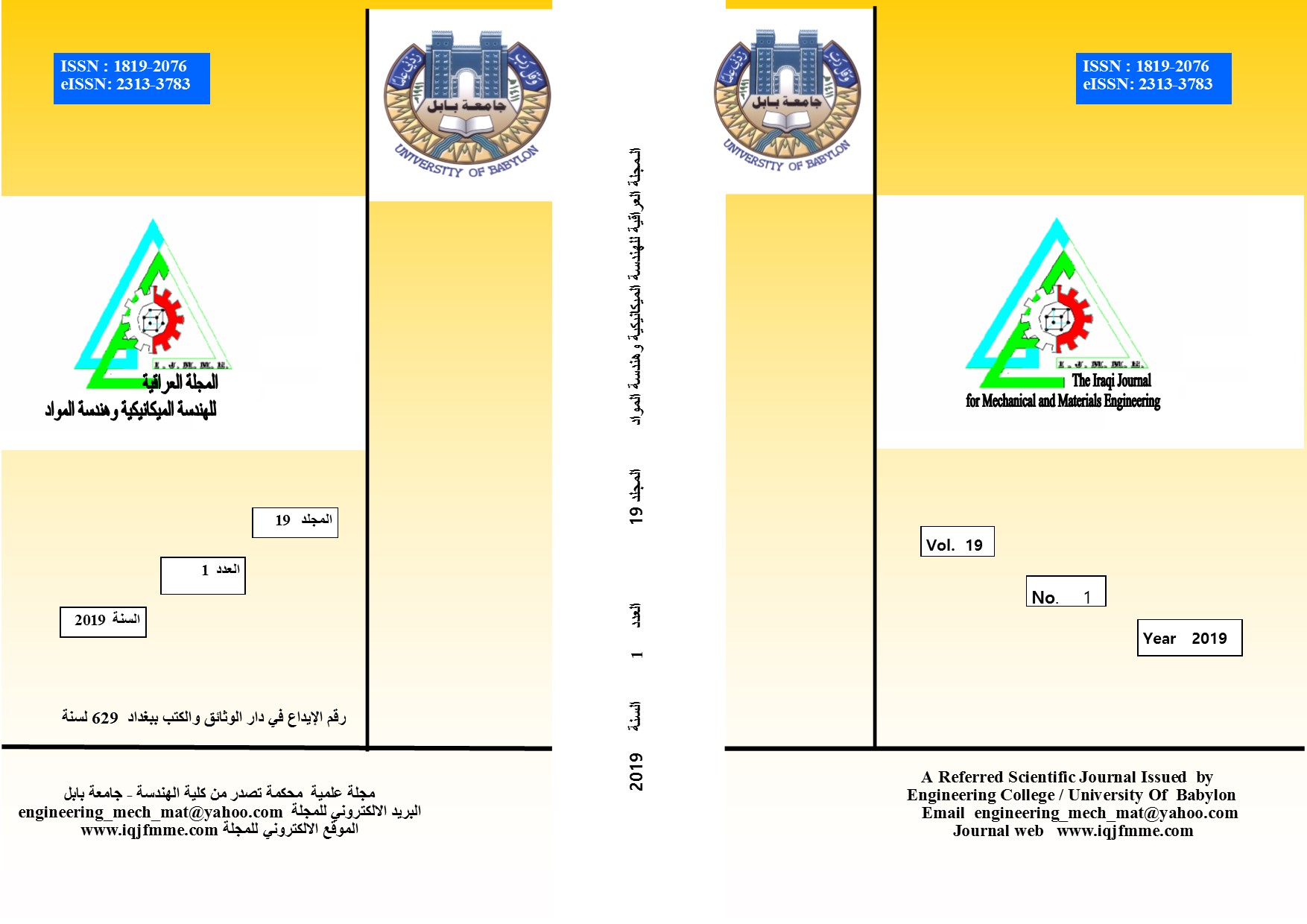Abstract
In Magnetic Abrasive Finishing (MAF) process the cutting temperature is generated from two
sources, from the electromagnetic flux (electrical heat), and from magnetic abrasive brush due to
the friction force (mechanical heat). The cutting temperature has significant effects upon the
condition of the surface, whereas it is less studied than the other parameters.
In this study, an attempt has been made to simulate and investigate the influence of cutting
parameters on the cutting temperature, to improve the thermal effect by MAF process. The aims
of this study was to determine the distribution of the cutting temperature in the working gap,
numerically and experimentally, then compared the results. In addition, to determine the most
influence parameters affecting on the cutting temperature for Brass alloy CuZn28.
Two dimensional Finite Element Models (FEM) with two software’s were developed to
predict the temperature by dynamic electric and magnetic field, the first was DEFORM 10.2 used
to calculate the mechanical heat and the second was COMSOL5.2 used to calculate the electrical
heat. Sixteen tests designed according to Taguchi matrix through the orthogonal array (OA) L16
( ). There are four various parameters that, have a large impact on cutting temperature, with
four levels (rotational speed (A), working time (B), current (C), and working gap (D)). The
analysis of the variance (ANOVA) technique was utilized to analysis the results, by using the
statistical software (MINITAB-17).
From the results, it is concluded that the Numerical modeling gives a very good comparison
with the values of experimental tests. The maximum difference between the numerical and
experimental temperature for brass CuZn28 is less than (9%).
sources, from the electromagnetic flux (electrical heat), and from magnetic abrasive brush due to
the friction force (mechanical heat). The cutting temperature has significant effects upon the
condition of the surface, whereas it is less studied than the other parameters.
In this study, an attempt has been made to simulate and investigate the influence of cutting
parameters on the cutting temperature, to improve the thermal effect by MAF process. The aims
of this study was to determine the distribution of the cutting temperature in the working gap,
numerically and experimentally, then compared the results. In addition, to determine the most
influence parameters affecting on the cutting temperature for Brass alloy CuZn28.
Two dimensional Finite Element Models (FEM) with two software’s were developed to
predict the temperature by dynamic electric and magnetic field, the first was DEFORM 10.2 used
to calculate the mechanical heat and the second was COMSOL5.2 used to calculate the electrical
heat. Sixteen tests designed according to Taguchi matrix through the orthogonal array (OA) L16
( ). There are four various parameters that, have a large impact on cutting temperature, with
four levels (rotational speed (A), working time (B), current (C), and working gap (D)). The
analysis of the variance (ANOVA) technique was utilized to analysis the results, by using the
statistical software (MINITAB-17).
From the results, it is concluded that the Numerical modeling gives a very good comparison
with the values of experimental tests. The maximum difference between the numerical and
experimental temperature for brass CuZn28 is less than (9%).
Keywords
: Cutting Temperature
brassCuZn28
FEM
Magnetic Abrasive Finishing process
MINITAB-17
